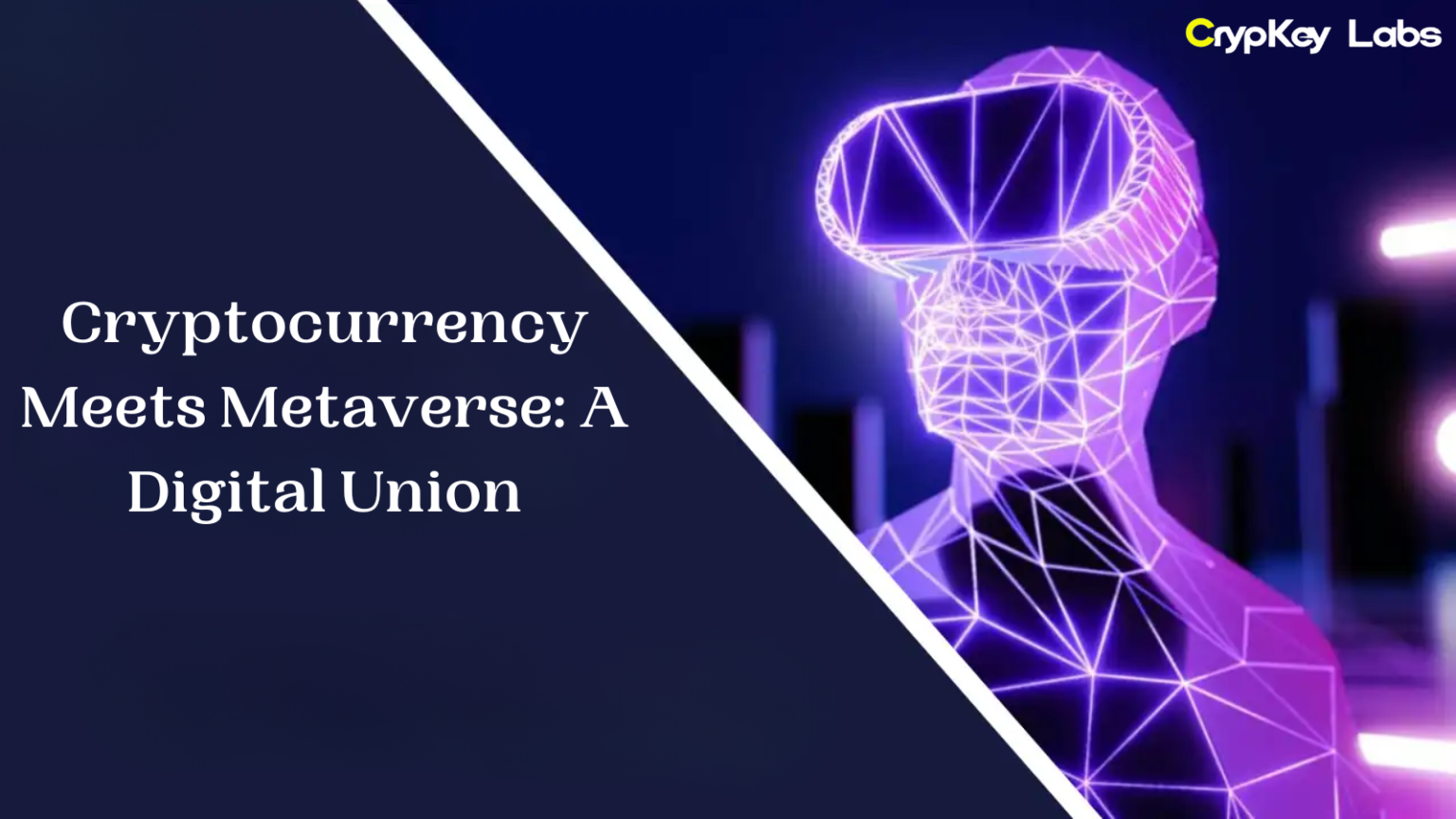Imagine a world where you can attend a concert, purchase virtual real estate, or even create a business, all without leaving your home. This is the promise of the metaverse—a digital universe where virtual interactions mimic real-world experiences. But what powers this vibrant virtual economy? The answer lies in cryptocurrency. Together, the metaverse and cryptocurrency are creating a revolutionary digital union, reshaping how we live, work, and play in the virtual realm. This blog explores how these two transformative technologies intersect and what this means for our future.
What is the Metaverse?
The metaverse refers to a collective virtual space where users can interact with each other and digital objects in real-time. It’s an interconnected network of immersive 3D worlds accessible through virtual reality (VR), augmented reality (AR), and standard internet platforms.
The concept isn’t entirely new. Early iterations like “Second Life” and multiplayer online games paved the way. However, today’s metaverse has expanded far beyond gaming to include social interactions, business ventures, and creative expressions.
Leading platforms like Meta (formerly Facebook), Decentraland, and The Sandbox are spearheading this evolution, turning the metaverse into a hub for community building and innovation.
The Role of Cryptocurrency in the Digital Age
Cryptocurrency is digital money built on blockchain technology, ensuring transparency, decentralization, and security. Unlike traditional currencies, cryptocurrencies operate without intermediaries, offering users direct control over their assets.
Bitcoin and Ethereum are household names in this space, but thousands of cryptocurrencies exist, each with unique use cases. For instance:
- Bitcoin serves as digital gold for storing value.
- Ethereum facilitates smart contracts and decentralized applications.
- Tether and USD Coin act as stablecoins, pegged to fiat currencies for reduced volatility.
The global adoption of cryptocurrency is growing as more people recognize its potential for financial freedom and innovation.
How Cryptocurrency Powers the Metaverse
The metaverse relies on seamless, secure, and decentralized transactions, making cryptocurrency a natural fit. Here’s how:
- Virtual Economies: Cryptocurrencies enable the creation of vibrant virtual economies where users can trade goods and services without traditional banking restrictions.
- Microtransactions: Users can pay for small-scale transactions, such as buying virtual clothes for their avatars or accessing exclusive content.
- Decentralization: Blockchain ensures that ownership records are transparent and tamper-proof, enhancing trust in virtual marketplaces.
For example, platforms like Decentraland use their native token (MANA) for virtual real estate purchases, while The Sandbox leverages SAND for gaming and creative projects.
Non-Fungible Tokens (NFTs): The Bridge Between Crypto and Metaverse
Non-fungible tokens (NFTs) play a crucial role in merging cryptocurrency with the metaverse. NFTs are unique digital assets stored on the blockchain, representing ownership of items like art, music, or virtual land.
In the metaverse, NFTs enable users to:
- Own Digital Real Estate: Virtual properties in Decentraland or The Sandbox are bought and sold as NFTs.
- Trade Gaming Assets: Weapons, skins, and tools in blockchain-based games are tokenized as NFTs, granting users true ownership.
- Showcase Art and Collectibles: Virtual galleries display NFT art, allowing creators to monetize their work while maintaining authenticity.
This digital ownership model empowers users and fosters a thriving creator economy.
Benefits of Integrating Cryptocurrency with the Metaverse
The combination of cryptocurrency and the metaverse offers numerous advantages:
- User Autonomy: Blockchain technology ensures that users own their assets outright without relying on centralized platforms.
- Decentralized Economies: Transactions occur peer-to-peer, reducing reliance on traditional financial systems.
- Global Accessibility: Anyone with an internet connection can participate, breaking down geographical and economic barriers.
- Innovation Opportunities: Developers and creators can build new applications and experiences, expanding the metaverse’s possibilities.
Challenges and Concerns
Despite its potential, the crypto-metaverse union faces several challenges:
- Scalability: Current blockchain systems may struggle to handle the volume of transactions needed for large-scale metaverse adoption.
- Environmental Impact: Crypto mining and blockchain operations consume significant energy, raising sustainability concerns.
- Security Risks: Cyberattacks, phishing scams, and fraudulent schemes remain prevalent in the crypto space.
- Regulation Uncertainty: Governments worldwide are still grappling with how to regulate cryptocurrencies, creating an uncertain legal landscape.
Addressing these issues will be critical for the long-term success of this digital union.
Future Implications of the Crypto-Metaverse Union
The integration of cryptocurrency and the metaverse is set to redefine multiple industries:
- Gaming: Blockchain-based games like Axie Infinity are already rewarding players with cryptocurrency, blending entertainment and income generation.
- Real Estate: Virtual land is becoming a lucrative funding opportunity, with some properties selling for millions.
- Education and Work: Virtual classrooms and offices in the metaverse could facilitate global collaboration and learning.
As these technologies evolve, they’ll likely become integral to our daily lives, blurring the line between physical and digital realities.
Real-World Examples and Use Cases
Several platforms exemplify how cryptocurrency and the metaverse are converging:
- Decentraland: Users can get, sell, and develop virtual land using the MANA token.
- The Sandbox: This platform allows creators to build experiences and games, with SAND serving as the native currency.
- Axie Infinity: A blockchain-based game where players earn cryptocurrency by battling, breeding, and trading Axies (digital pets).
- Cryptovoxels: A virtual world where users can own land and create experiences powered by Ethereum.
These examples illustrate the vast potential of this digital union.
Conclusion
The intersection of cryptocurrency and the metaverse represents a groundbreaking shift in how we interact with technology and each other. Together, they’re creating a decentralized, immersive digital world where users have unprecedented control over their assets and identities.
As this union continues to evolve, it’s essential to stay informed and engaged. Whether you’re a gamer, investor, or digital enthusiast, the metaverse and cryptocurrency offer exciting opportunities to explore and shape the future of the internet.







